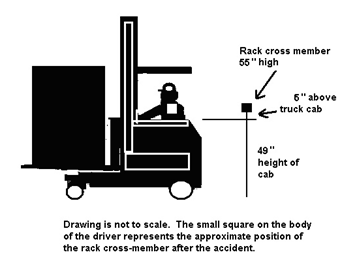 A wishbone or magical thinking: it’s not a safety strategy. Nor is wishing the accident hadn’t happened. We get many calls about The Backbone the day after a forklift underride fatality. That’s the day after offering condolences and apologies to family members; after the family begins funeral arrangements; after work colleagues are dealing with the unthinkable.
A wishbone or magical thinking: it’s not a safety strategy. Nor is wishing the accident hadn’t happened. We get many calls about The Backbone the day after a forklift underride fatality. That’s the day after offering condolences and apologies to family members; after the family begins funeral arrangements; after work colleagues are dealing with the unthinkable.
The reasons for not installing a Backbone are many: our operators are well trained; it’s their responsibility to drive safely; the government hasn’t told us to do it; and, we’ve never had an underride accident.
But never experiencing an accident is not the same as having a safe workplace. If unsafe conditions persist, you simply get away with it – until you don’t.
So what can you do? To begin, lead safety as if your family worked there. How confident would you be knowing your son, daughter or spouse were a stand up forklift operator at your workplace? With that in mind, take the following steps:
- Conduct on-site assessments to identify underride hazards in your workplace.
- Communicate those underride hazard areas to all employees.
- Provide proper training to all stand up forklift operators. Emphasize keeping a direct line of sight when travelling and looking toward direction of travel at all times.
- Install protective rear guards to enclose the operator compartment. And insist that the guards are ANSI/ITSDF B56.1 compliant. Ask for proof of testing and compliance.
Above all, talk to your employees. They’re on the floor; they know their jobs best, including safety hazards. Ask your stand up forklift operators how they feel about the lack of a physical barrier protecting their backs.
Take steps to close out the underride hazard in 2024. Don’t wait for the day after. Don’t rely on a wishbone. Put The Backbone on your stand up forklifts.
